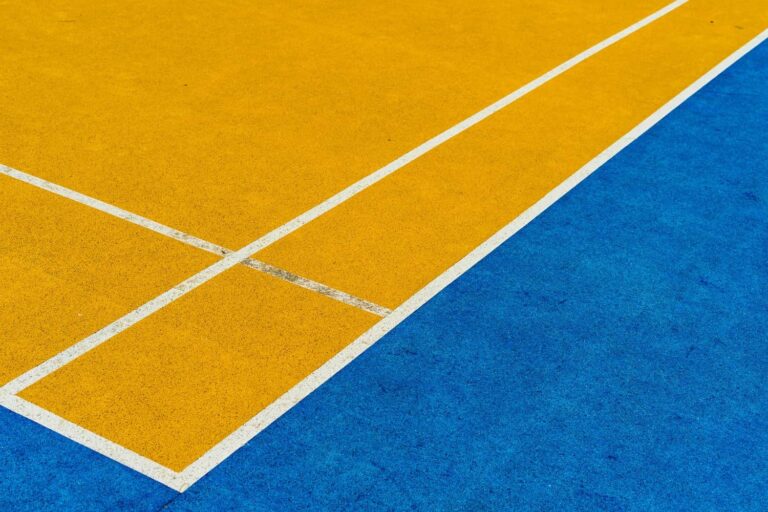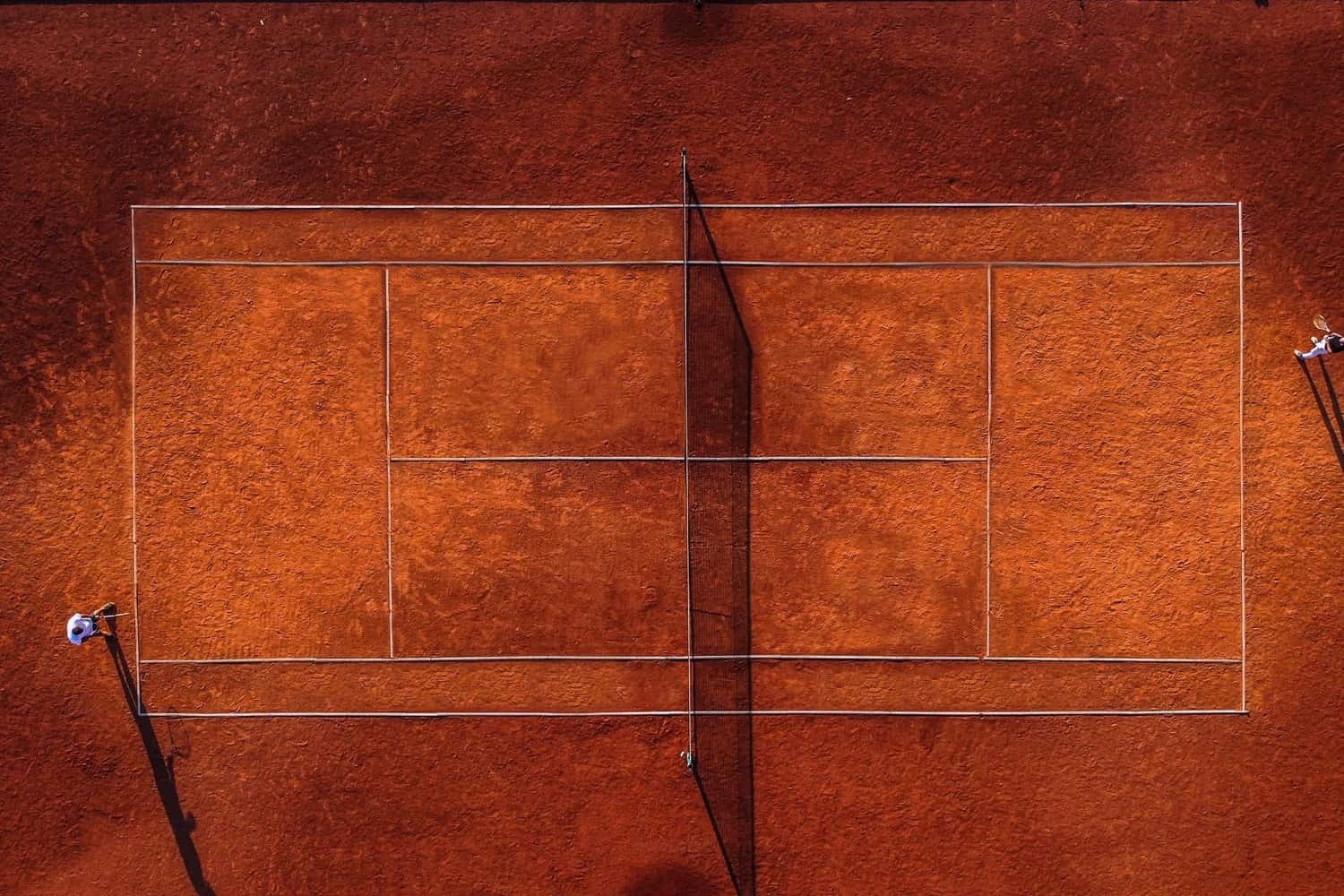In a simple A DIY Tennis Court is a personal tennis court for playing personal tennis. A Personal tennis court is one that you may construct in your backyard. You can construct it out of clay asphalt, concrete, or grass. Although building A DIY Tennis Court can be enjoyable and fulfilling. It also takes a lot of labor, planning, and preparation. To build your tennis court, you’ll need adequate time, money, and space. For your court, you must also select the appropriate surface, dimensions, and design. Then install it according to the instructions and planning.
Are you new to constructing a personal Tennis court? Do you have any idea of A DIY Tennis Court? If you don’t know, don’t worry. I am here to tell you. Let’s start with our topic. You can play tennis whenever you want and without paying court costs with it. If you want to know more about DIY Tennis Court keep in touch till the end.
There are different types of tennis courts like clay, hard, or grass. You can choose according to your budget, playing style, and yard size. A DIY Tennis Court is a personal tennis court that you can set up in your backyard or desired area. If you want to play tennis but don’t want to go to a public court, this is a great alternative. A personal tennis court can have a variety of surfaces, grass, hard, or clay. For tennis fans, building a DIY Tennis Court is an enjoyable undertaking.
Table of Contents
ToggleHow to Construct a DIY Tennis Court (Personal)?
Yard preparation
- Before excavating your yard, you must remove any trees that may be growing there.
- A balanced level surface is the most crucial part of a well-constructed tennis court.
- A balanced level surface is the most crucial part of a well-constructed tennis court.
- Depending on the amount of land preparing your yard can take a few days to weeks.
Groundwork or digging foundation
- The initial stages, digging, and leveling the land are difficult for people.
- Wearing safety glasses is essential when performing any outdoor digging or cutting tasks.
- Before starting to dig up your yard, you should remove trees on your land. Because most courts need at least 12 inches of clearance below the surface.
- You'll need an industrial-strength shovel and leveler before you can start digging.
- Local building supply companies like "Lowes" or "Home Depot" lend out levelers.
- Digging around the court's future perimeter should be your first step.
- Using your shovel, dig 8 to 10 inches down to break through any huge roots or rocks.
- Clear your yard of stones, gardening tools, and other items you discover during the path.
-
After 8 to 10 inches of digging, use a leveler to smooth the surface.
- Use a roller to compact the soil until it is flat and firm the ground with a skid loader. This process will take two days.
- To form the outline of your tennis court. Place stakes in each of the four corners of your location and tie a string between them. To draw the boundaries for the design layout of your tennis court, hammer some nails into the stakes.

Building the Court's Concrete Surfacing
When your site is roughly 6 inches thick with concrete. Then it’s time to start constructing the tennis court surface.
Before starting to construct the court surface
- ou need a concrete paver provider to send three shipments of concrete materials. Make an appointment with them in advance so they can help you when your delivery is ready.
-
To guarantee that your products arrive on time. Call at least two to three days in advance when placing your order.
- At last, all the extras, including the net, lights, fence, court paint, and painting installed.
Sunlight Intake
Selecting a spot that receives lots of sunlight is crucial. Tennis is an outside sport, so it’s not ideal to play all the time in the shade. Choose a spot that receives 6 hours or more of direct sunlight.
Zoning laws
Verify your local zoning laws before constructing your tennis court. There are limitations on the location and size of outdoor sports courts in some places. Obtaining a permit is necessary before you begin building.
You may pick the ideal spot for your homemade tennis court by taking these things into account. You can build a top-notch court that will bring you and your family years of delight.
Slope
A level, level space is best for your homemade tennis court. Before you begin construction, you must level out any slopes in your yard. As needed, you can do this by adding or removing dirt.

Drainage
For any outdoor sports court, including tennis courts, proper drainage is crucial. Before beginning construction, you must create a drainage system.
Advice for Constructing a tennis court
Determine your spending limit
Before starting the procedure, make a list of the supplies and resources you’ll need. Before you start, make a list of all the tools, and materials you’ll need. This will help you estimate the cost of finishing, so plan your budget enough.
Pick your location
The significance of choosing a suitable location for your tennis court is very high. It’s advised to have an area of 120′ by 60′ so you have enough space to grow. Once construction begins, it might not always finish up exactly this size.
Before location decisions, you should be aware of obstacles that will be present. Get rid of anything superfluous, waiting for the situation to worsen.
The construction standards
Certain tennis courts need to create a drawing and submit it to the government for approval. They can give you all the specs you need. A tennis court would be 20 feet by 44 feet. With that a least of 9.5 inches for the playing surface and 4 inches for the base layer.
- A tennis court's measurements are 78 feet by 27 feet.
- Breadth 8.23 m (27 feet) or 36 feet for doubles
- Length 78 feet long (23 meters)
- Net height 3.5 feet (1.07 meters
Selecting the Best Surface
It is crucial to select a surface that suits your budget because it has an impact on the costs.
kinds of surfacing material
- Rubber surfaces (in-between)
- Concrete (most expensive)
- Asphalt (most common)
- The court's playing characteristics are also harmed by the surface selected. Concrete is often utilized for this reason.
- Many tennis clubs choose rubber surfaces to use decibel levels of play. Rubber surfaces are growing because they are shockproof and durable.
- Asphalt is the most common option as it is the least expensive, and needs care.
Consult a professional
Seeking the counsel of an expert in these areas is a wise decision. It will save you a great deal of time and money. Before choosing, make sure to inquire about prices from several relative businesses.
Materials of A DIY Tennis Court
Material for the fence
A fence is from main rule to enclose your court. The material you select will rely on your preferences and financial situation. Chain links and vinyl-coated chain links are the most used materials. A gate is important for entry and exit and a small height of 10 feet for the fence.
Material for the court surface
Your court’s surface depends on your spending limit and personal tastes. The most often used materials are clay, concrete, and asphalt. The least expensive option is asphalt, but it needs more maintenance.
Equipment for DIY Tennis Court
Excavator
To prepare the ground for building your court, you will need to rent an excavator. An organization that rents out construction equipment may provide you with an excavator.
Roller
Before installing the court surface, the earth is often leveled with a roller. A company that rents out construction equipment may provide you with a roller.
Level
To make sure your court is level and flat, you’ll need a level. A hardware store sells levels for buy.
Trowel
To apply the court marking paint, a trowel is an important need. A trowel is something you can buy at a hardware shop.
Tape measure
To determine the size of your court, you will need a tape measure. A hardware store sells tape measures that you can buy.
Which Surface is Best? Hard Court or Clay?

The type of court you desire will determine the surface of your court. Build a clay court if you want to compete against professionals. But, not everyone can afford this tennis surface. Some construct hybrid courts, which give advantages to both hard and clay surfaces. Remember to take the court surface into account when determining the size of your yard.
Benefits of DIY Tennis Court
- You save money on memberships and court fees.
- You can install your tennis court according to tastes, surface type, size, and color.
- By using your court for regular practice, you can get better at tennis.
- Having a game of tennis at your house with your loved ones may be a lot of fun.
Disadvantages of DIY Tennis Court
-
A tennis court requires enough amount of room in the place you have selected. The court's dimensions are 78 by 36 feet and more room for drainage and fencing.
-
A personal tennis court can cost $5,000 to $50,000 or more.
-
A tennis court requires large financial, time, and labor to construct.
-
You also need routine care including rolling, sweeping, and brushing
-
Follow any municipal zoning laws relevant to your tennis court project.
-
Before construction, you need to get your local authorities' permission or approval. There are some dangers related to the climate, surroundings, and safety. For instance, rain, snow, wind, sun, heat, cold, humidity, or pests.
Conclusion
In conclusion, having A DIY Tennis Court is a good investment. A DIY Tennis Court is a personal tennis court for playing personal tennis. Building A DIY Tennis Court can be enjoyable and fulfilling. For your court, you must also select the appropriate surface, dimensions, and design. Then install it according to the instructions and planning. A typical tennis court would be 20 feet by 44 feet. With that a small of 9.5 inches for the playing surface and 4 inches for the base layer.
This blog post is only for my new DIY tennis court constructors. At the end of this article have got all the information about DIY tennis court. This blog post will prove helpful before building a tennis court. This article provides complete guidance on dimensions and height. It’s advised to have an area of 120′ by 60′ so you have enough space to grow. A gate for entry and exit and a small height of 10 feet are for the fence.

